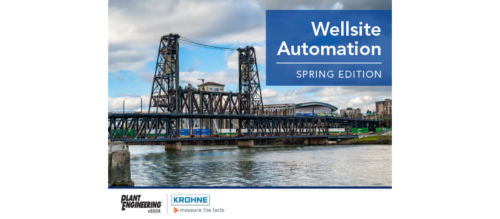Notes on HTE-based corrosion inhibition
High-throughput experimentation (HTE) allows large numbers of experiments to be executed and conducted in parallel
High-throughput experimentation (HTE) allows execution of large numbers of experiments to be conducted in parallel. It is widely used in the pharmaceutical industry for drug discovery.
In 2019, Clariant, a Swiss specialty chemicals company, opened its HTE laboratory in Houston, Texas to advance oil & gas research and application development for the oil & gas industry. The lab is part of a Clariant initiative to expand HTE capabilities globally.
The technique’s efficacy relies on automated instrumentation and robots, specialized software tools, miniaturization, intelligent design and enhanced analytics.
Clariant believes its use of HTE in formulating custom corrosion control solutions is unique.
Considerations involved
Well operators make choices when controlling corrosion. Most often, low-grade carbon steel pipes transport fluids and gases rather than expensive alloys. Inhibitors prevent corrosive acid attack caused by the presence of dissolved CO2 and H2S gases in hydrocarbon or produced water flow.
Corrosion inhibitors are formulated from precise ratios of from three to seven ingredients. Small formulation changes can result in large changes in inhibitor application effectiveness.
The recipe of a corrosion inhibitor likewise varies depending on specific conditions of temperature, pressure, salinity and composition of the produced water and hydrocarbon.
The HTE lab’s purpose is to rapidly and accurately screen the most effective inhibitor formulations for the application. It’s necessary to understand the prevalent system conditions and to mimic in the laboratory the field corrosion environment in the field. This includes metallurgy involved, temperatures and pressures the hydrocarbons travel at and even pipe–run lengths.
Design of experiments moderates the testing required. Automation executes many experiments simultaneously. Miniaturization enables smaller sample sizes, improves sustainability efforts during test phases and prove useful when pre-production samples are in short supply.
A broad spectrum of potential treatments is looked at, since it’s not always possible to change the inhibitor’s chemical formulation.
Data replaces intuition
Classical corrosion testing is done manually and serially, grounded in industry derived standards. Based on experience, corrosion industry veterans specified formulation ranges as a place to start. Clariant takes this to the next level, digitizing formulation efforts while institutionalizing this data, enabling instant access to this know-how.
Clariant’s HTE lab has two aspects: 1) robotic formulation is concerned with basic chemistry and uses fundamental physical properties as a proxy for corrosion. 2) Through detailed application testing, performed in accordance with industry standards, the HTE method takes these formulations and conducts electro–chemical and gravimetric testing.
In a nutshell, the HTE lab automates choosing a formulation range. Then, using autoclaves or other means, the exact, best formulation is specified.
While product performance is important, it’s relative to the production environment. For deep subsea, best-in-class product performance is critical. HTE identifies the best of the best corrosion inhibitor. Oil production in the Permian basin operates under different parameters. Budget and formulation must be balanced between costs and performance level required. The HTE platform is flexible to pinpoint best-in-class cost-performance.
Now, more than ever, innovation, agility, and cutting-edge technology are vital levers to ensuring oil & gas industry viability.
Original content can be found at Oil and Gas Engineering.
Do you have experience and expertise with the topics mentioned in this content? You should consider contributing to our CFE Media editorial team and getting the recognition you and your company deserve. Click here to start this process.


